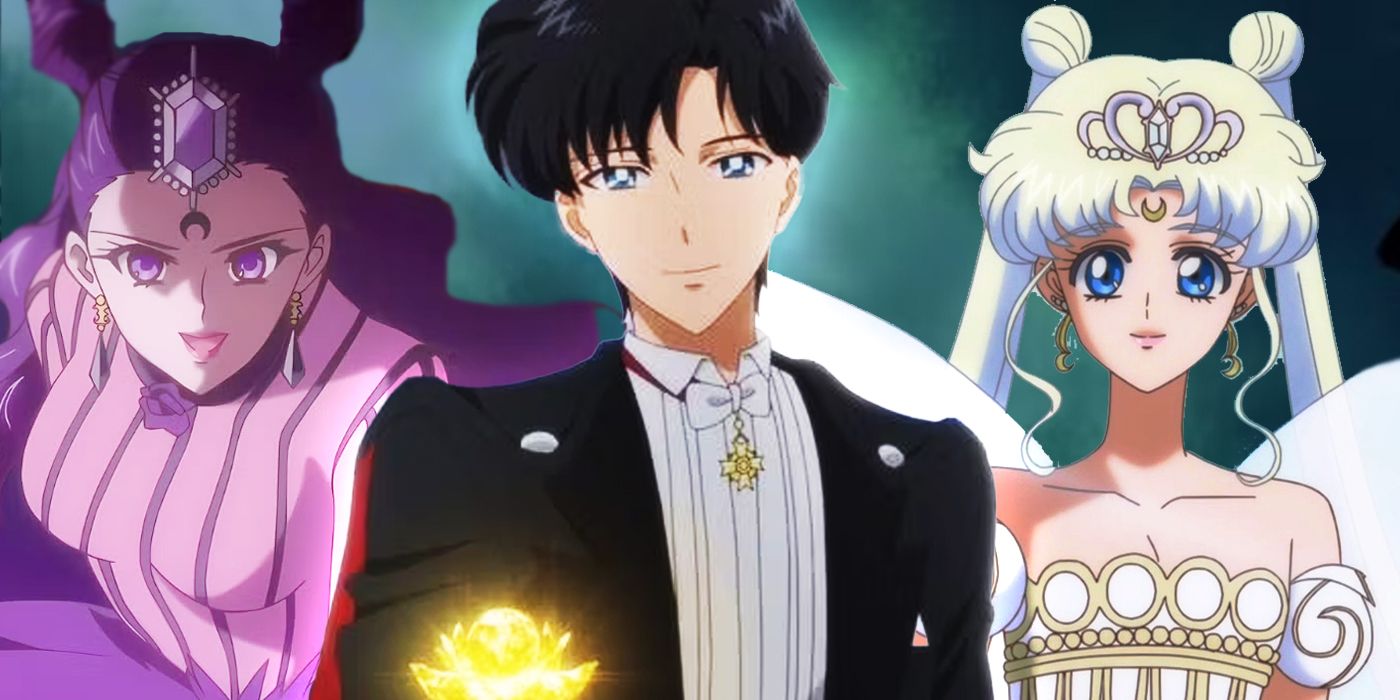Tech
The Legend of Zelda: Echoes of Wisdom Review – IGN

This year Nintendo finally gave its iconic princesses the royal treatment, putting both Peach and Zelda center stage in their own games. But with all due respect to the monarch of the Mushroom Kingdom, the head of Hyrule’s adventure isn’t just another second-tier spinoff. Trust me when I say that in every way that matters, The Legend of Zelda: Echoes of Wisdom is the next mainline Zelda game (the 2D line, at least). It takes all of the linear dungeon crawling and key item-style progression I’ve missed from the older games in this series and perfectly combines them with the ridiculously clever, freeform problem solving that made Tears of the Kingdom so captivating. It doesn’t always take this exciting step forward with unflappable royal grace, but it’s still easily become one of my favorite Zelda games – with or without a green tunic on my back.
While there are plenty of substantial mechanical changes to the way Echoes of Wisdom plays as compared to its predecessors, the practical differences of its main character switcheroo are actually pretty negligible – there were even a couple of times during my roughly 23-hour playthrough where I briefly got confused by a conversation because I legitimately forgot I wasn’t Link. Perhaps the most surprising difference to me, however, was how it makes the story that much more engaging. Rather than being yet another remix of a destined, mute swordsman’s journey to save the day, Zelda is the central character of the plot. As a result, I felt much more important and involved as I explored Hyrule to seal the mysterious purple rifts that were forming across my kingdom.
Of course, the most consistent reminder that you aren’t Link is the more indirect way Zelda actually interacts with that world and fights the wide variety of enemies within it. Thanks to a little floating friend named Tri who accompanies you, you have the power to create echoes of any enemy you defeat and an array of specific objects you come across. That means defeating a Moblin once will let you summon it to automatically fight for you in the future, and you’ll frequently create beds, boxes, and even trampolines to clear gaps or climb ledges as you explore. The menu you use to swap between your collection of summonable creatures and items does quickly balloon into an annoying-to-navigate pile, but it’s so cool that the number of echoes you can actually have out at the same time is only capped by an upgradable point system – starting at three and going up from there – and that always feels fun to plan around rather than than overly limiting.
Echoes encourages the same “go ahead and break our game” creativity that Nintendo embraced with Breath of the Wild and doubled down on with Tears of the Kingdom, but this time in a 2D Zelda game that borrows the Link’s Awakening remake’s delightfully toy-like art style and occasional side-scrolling segments (as well as a bit of its inconsistent framerate, which isn’t wildly distracting but does also feel sort of inexcusable at this point. Where’s that Switch 2, Nintendo?).
I get that the echo system may sound far too quirky to be considered anything but an experimental spinoff of the traditional sword and shield combat we’ve seen in pretty much every 2D Zelda since the original in 1986, but the reason it’s able to stay so distinctly Zelda is because many of these echoes essentially act as classic key items. You may not have a hookshot, but that floating floor tile you’ll only find in a certain cave can suddenly let you clear large pits in a similar way; there’s no shovel this time, but a little mole friend will happily dig up secrets for you; and Skyward Sword’s Gust Bellows isn’t back, but holding a Wind Cannon above your head will clear away piles of sand just as well.
The fact that so many of the most useful echoes are either tucked away in optional caves or found in dungeons (alongside some important central abilities, like Tri’s power to lift and move any object, Ultra Hand-style) gives Echoes of Wisdom a sense of progression that I must admit I missed while playing Breath of the Wild and its sequel. You still have immense freedom to explore where you want and solve problems in unexpected ways, but I love that you also have that classic Zelda feeling of leaving most dungeons with something new in your pocket. Sure, sometimes you’ll just get another middling summonable monster you’ll probably never use – but other times you’ll casually be handed something like the Water Block, a Minecraft-like cube which fundamentally changed how I moved around the map by letting me swim up or along walls with ease.
The exceptional puzzle rooms in Echoes of Wisdom also make great use of the absurd range of options you are given. Seeing a chest just out of reach would get my mind racing right away as I thought back through the exhaustive list of stuff I could summon that might help me out. That could be as simple as creating a monster to hit a switch for me, or as weird as stacking multiple things in just the right way to let me grab an object with Tri and then lift it past a series of obstacles and onto a button from afar. There is rarely one right answer, and the “a-ha!” moments are plentiful.
That said, the one place Echoes of Wisdom doesn’t really benefit from being built entirely around summons is combat. While puzzles really are more of the focus this time around, there’s essentially just as much combat as ever as well, and summoning a few echoes only to watch them slowly attack your target isn’t exactly thrilling stuff. This is coming from someone who typically loves playing as summoning classes in games like Diablo or Frosthaven, but in those instances you usually aren’t just spawning in a few dudes and then sitting on your hands until they finish the job. You do get some faster or harder-hitting options (the wide-spinning Peahat was an early favorite of mine) as you go, and fights are by no means unpleasant or anything like that, but swinging a sword as Link is still just fundamentally more fun.
Thankfully, Zelda isn’t a helpless damsel who relies entirely on others to fight for her: she literally has Link’s sword and can swap to “Swordfighter Mode” to attack directly at pretty much any time. However, your energy bar drains quickly while in that form, and that resource is limited enough that you can’t rely on it too heavily. The bar can be upgraded, but running out in the middle of a harder fight or a boss can be a real hassle if you don’t have any energy recovery items on hand, so I was always a little cautious about when I chose to pull out my blade. That means your combat options are essentially letting someone else handle fights or taking matters into your own hands with the pressure of a ticking clock, both of which are entertaining, but not to the same buttery smooth degree that echoes improve exploration and puzzle solving.
Combat does at least get a little more interesting later on thanks to the completely optional (and surprisingly easy-to-miss) automaton system. This small selection of buildable robots don’t cost any points to pull out of your pocket, but you can only use one at a time, they need to then be wound up manually before they start doing their job, and you’ll have to pay to repair them if they take too much damage. The payoff can be worth it though, with options like a Deku Baba that can eat enemies whole and a sword-wielding Moblin with a slow but massive area-of-effect slice. That makes them a pretty neat high risk/high reward option, and gives you a little more to do after summoning echoes in combat without having to spend any energy.
Another way automaton power is balanced is that you have to assist one character in constructing by completing a series of side quests – and Echoes of Wisdom has a lot of side quests. While it took me roughly 23 hours to roll credits, you could certainly make it there much faster if you are mainlining the story. My playthrough was fairly comprehensive, completing every quest I could find and hunting down collectibles, but I also wasn’t shooting for 100% completion. Going out of my way always felt worth it, be that because of the tangible rewards I would get, the useful new echoes I might find, the charming characters and stories I would encounter (a village of adorable Deku Scrubs obsessed with sweets is a real highlight to look out for), or the multiple entirely optional mini-dungeons I could complete, each of which has its own unique boss fight.
Exploring Hyrule in search of these extras is one of the clearest places that Echoes of Wisdom feels like a Zelda chimera – an explicit hybrid of A Link to the Past and Tears of the Kingdom. Longtime fans will notice that parts of the map are nearly exact replicas of the SNES terrain, down to the little elevated platform just south of Hyrule Castle that Link’s house was on (though it’s absent here). Meanwhile, other areas have defining features of the Breath of the Wild map where you would expect them, from the Gerudo village in the southwest to an electricity-filled jungle in the southeast. The Zora are even split into two rival tribes: one with the fishtail heads of their modern design and the other with the finned-faces of the ones that would pop out of the water to attack you more than 30 years ago. In that way, Echoes of Wisdom feels like Nintendo fully embracing both the past and the present of Zelda, mixing what this series used to be and what Breath of the Wild so abruptly pivoted toward into a single game that honors and makes the best of both halves.









